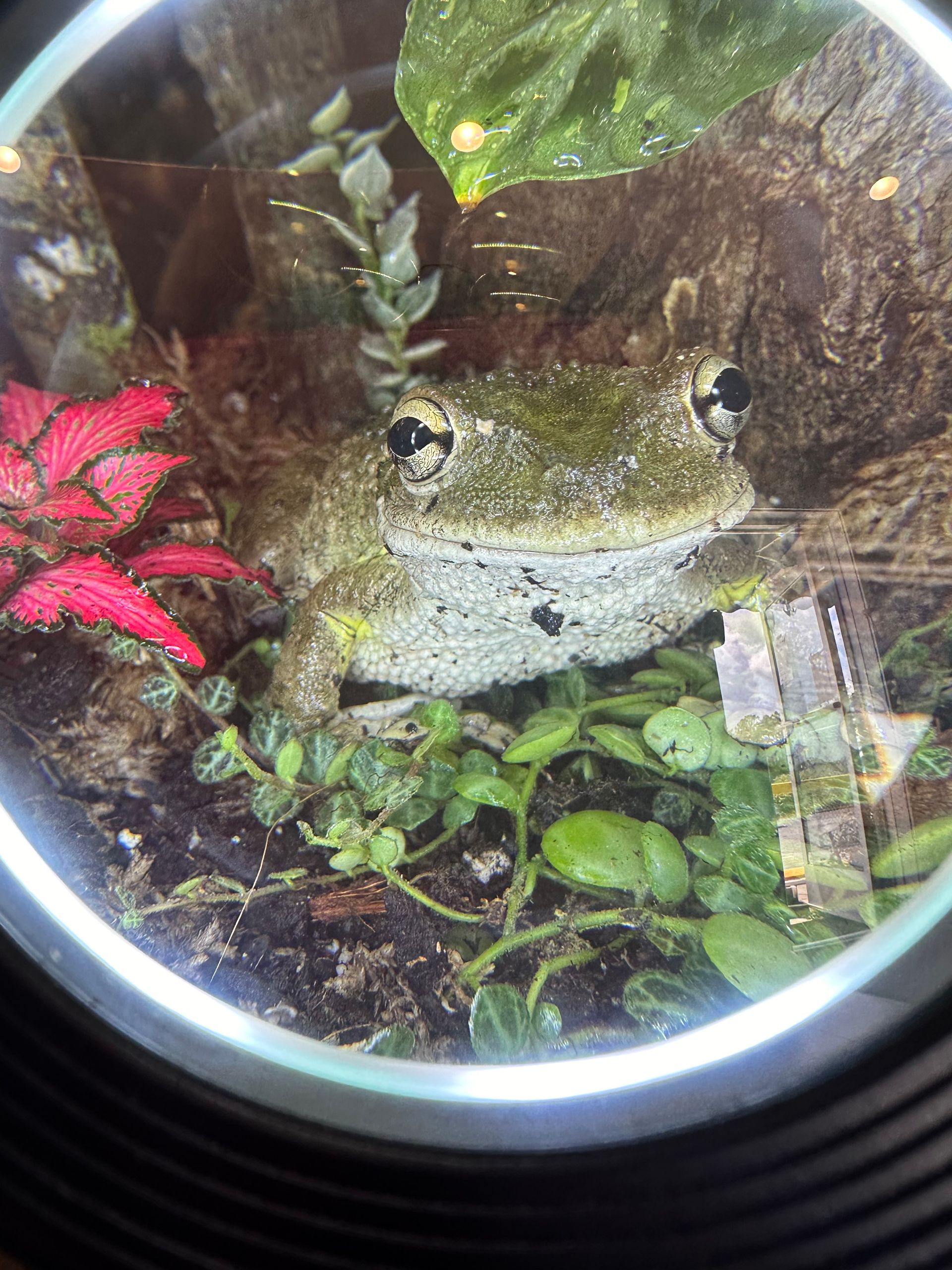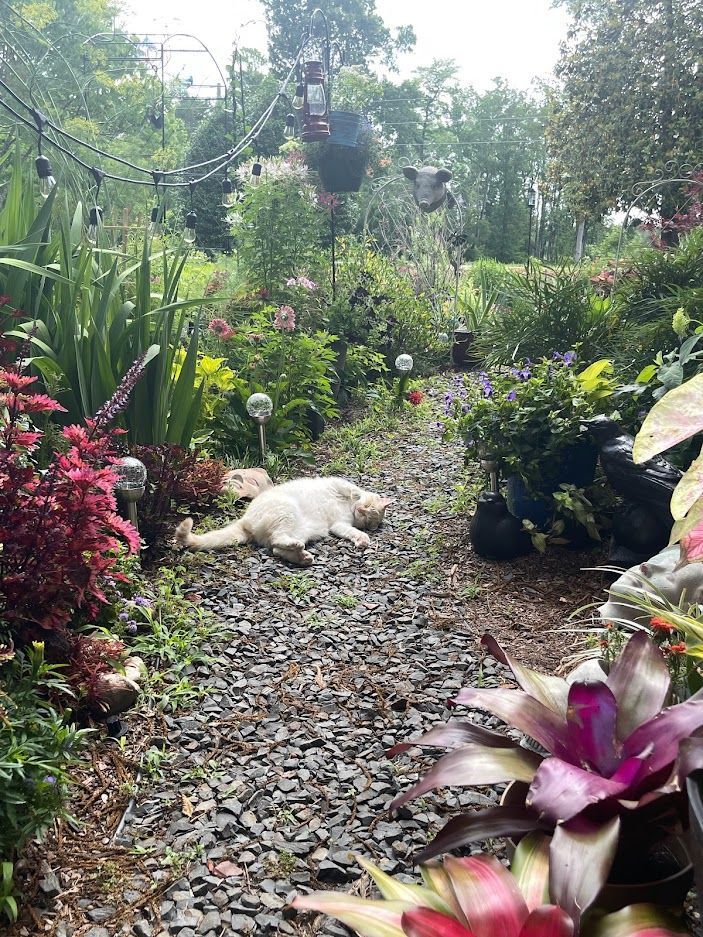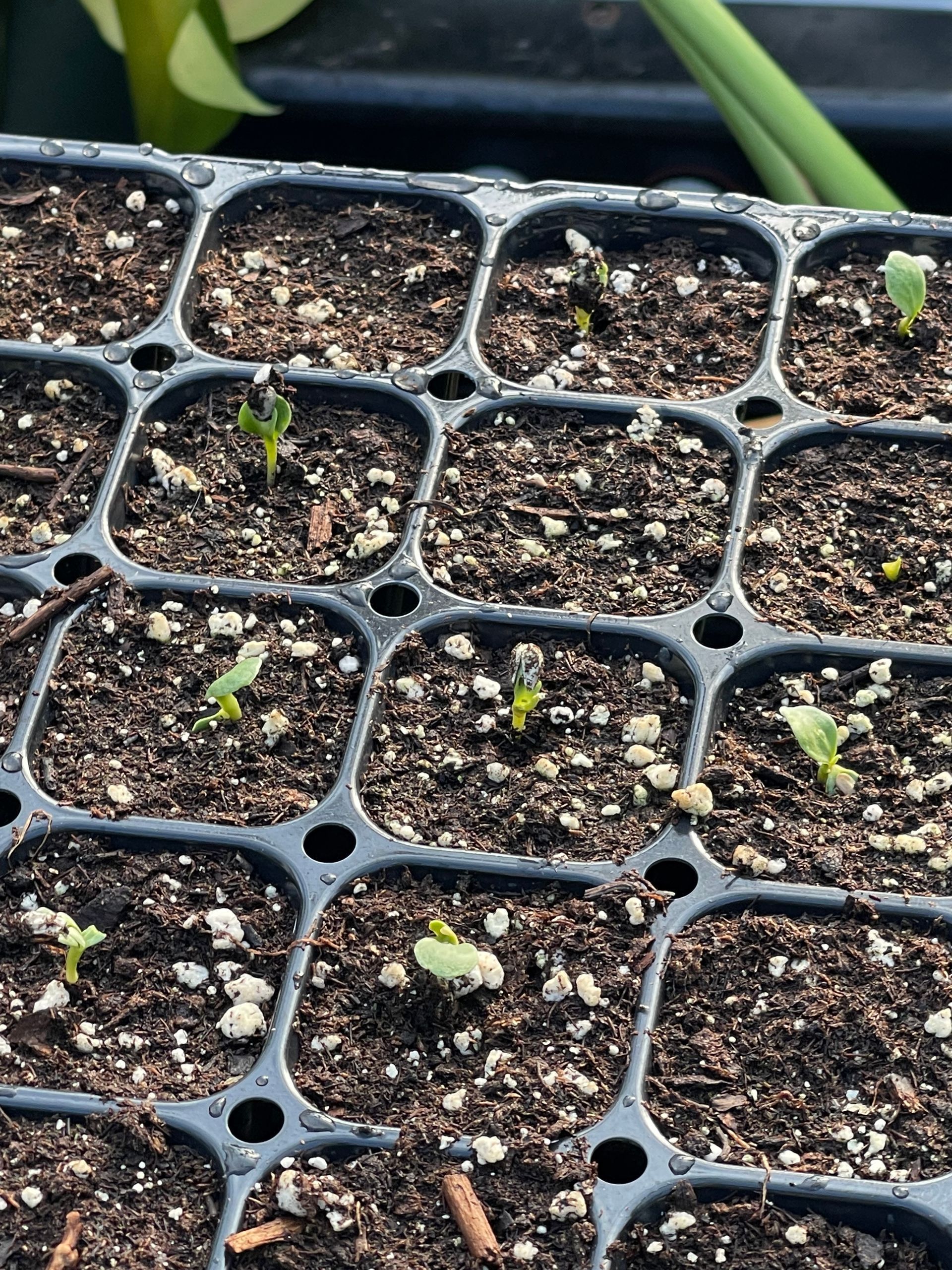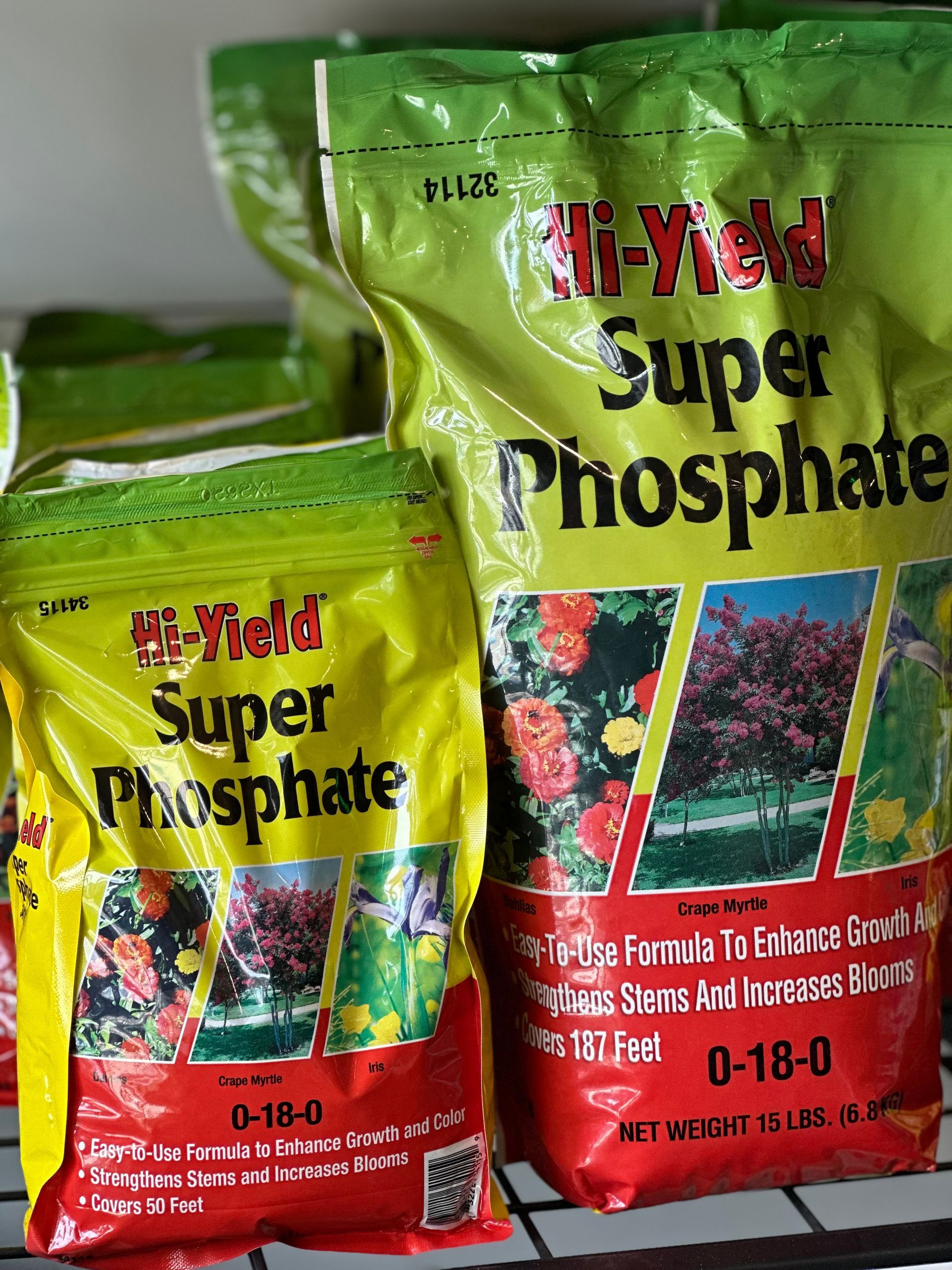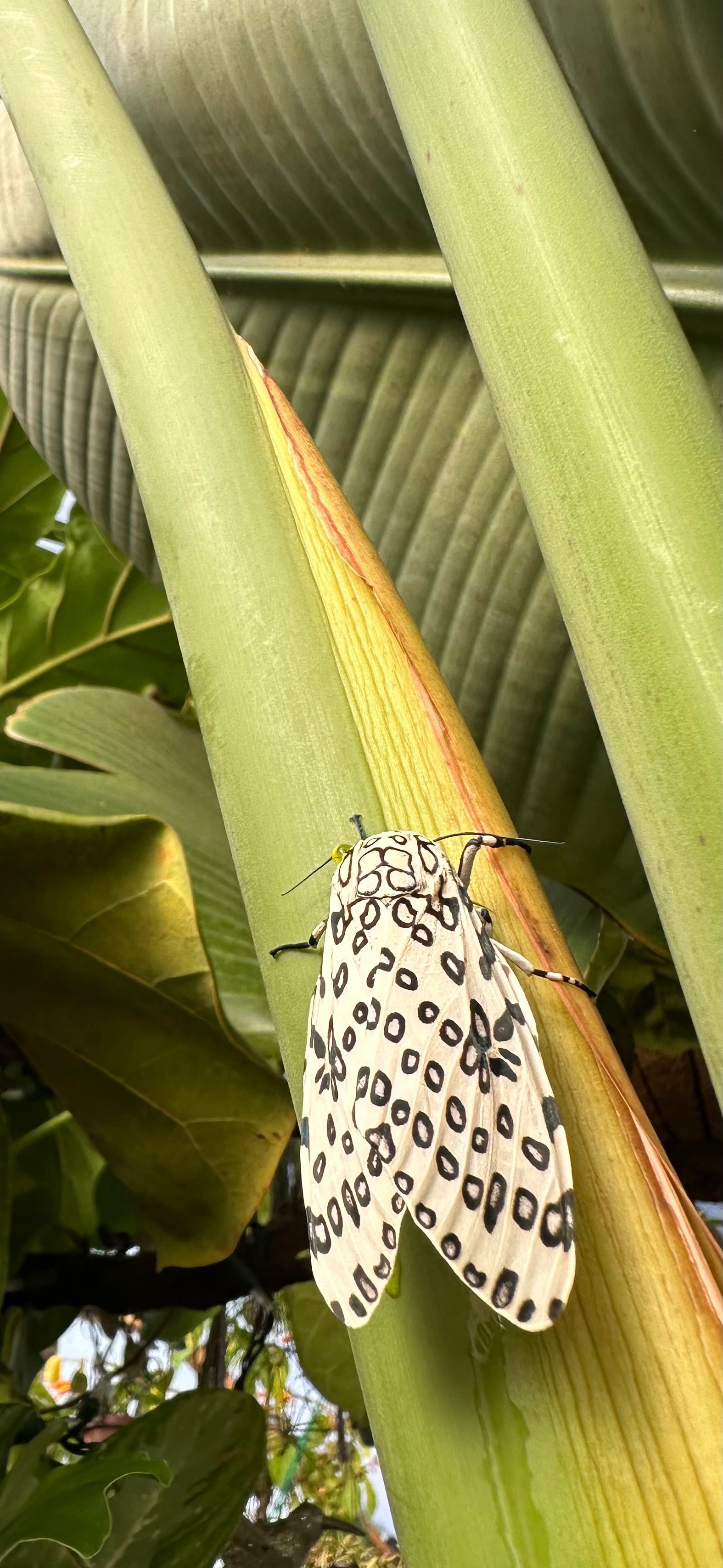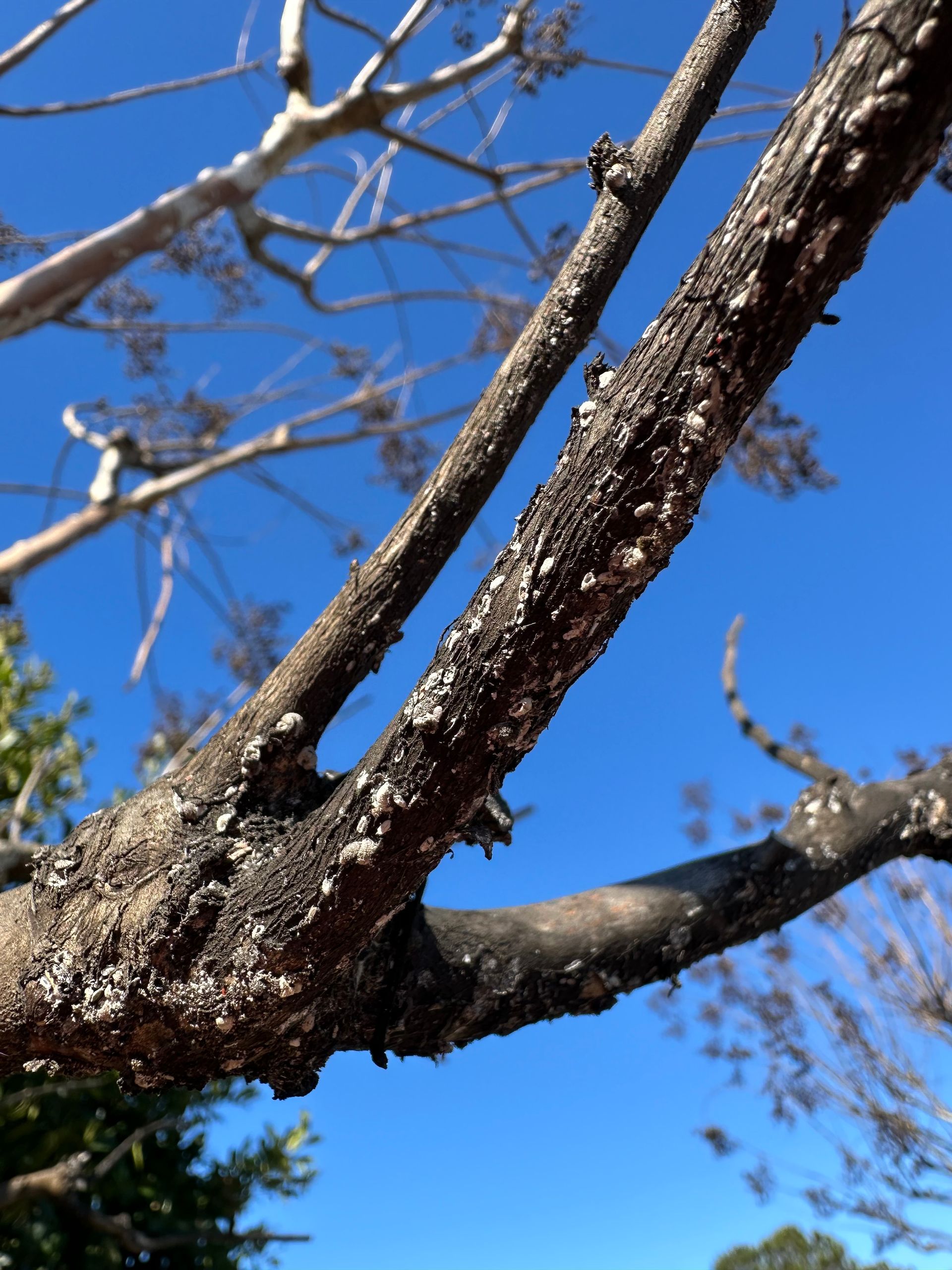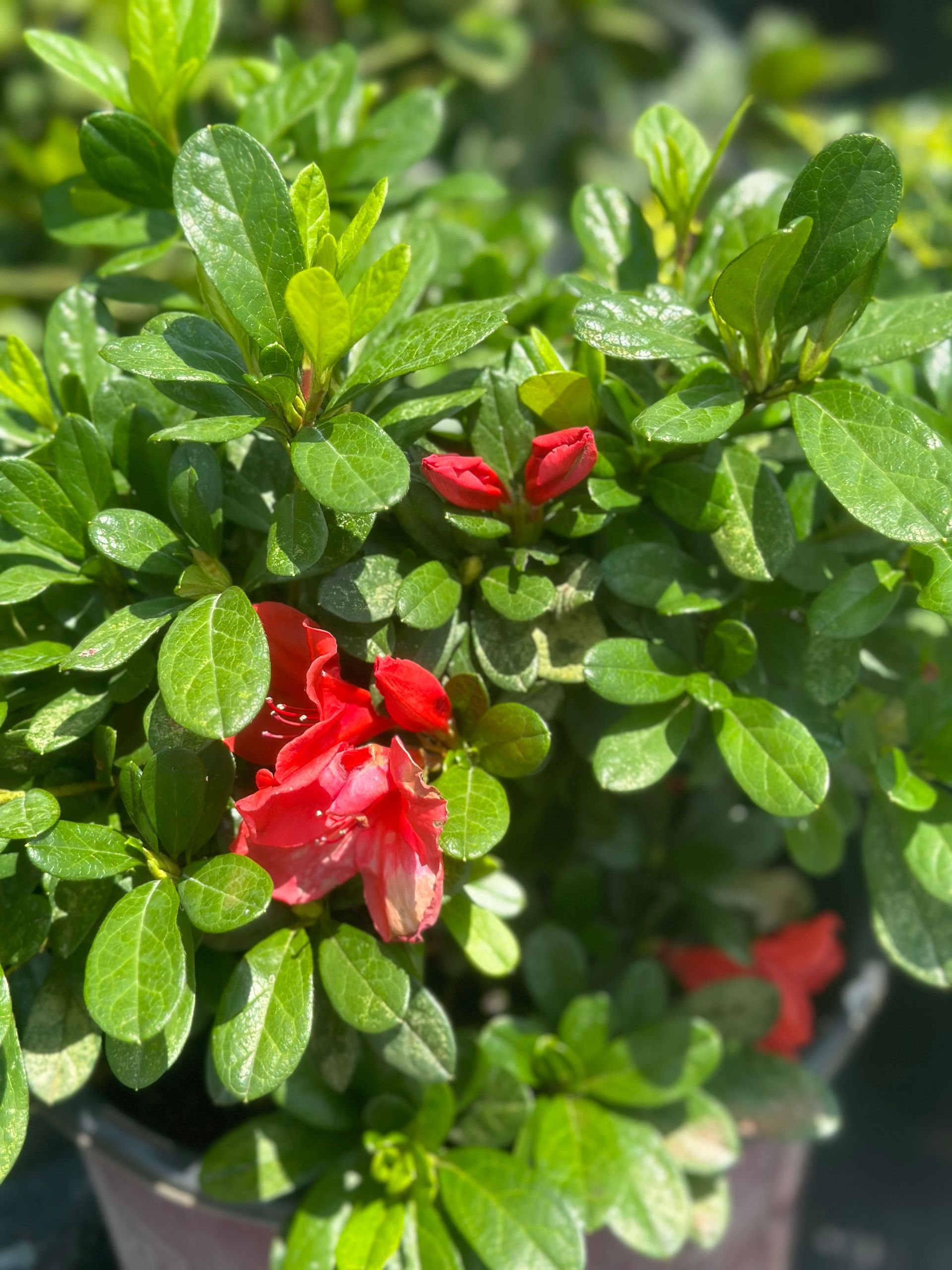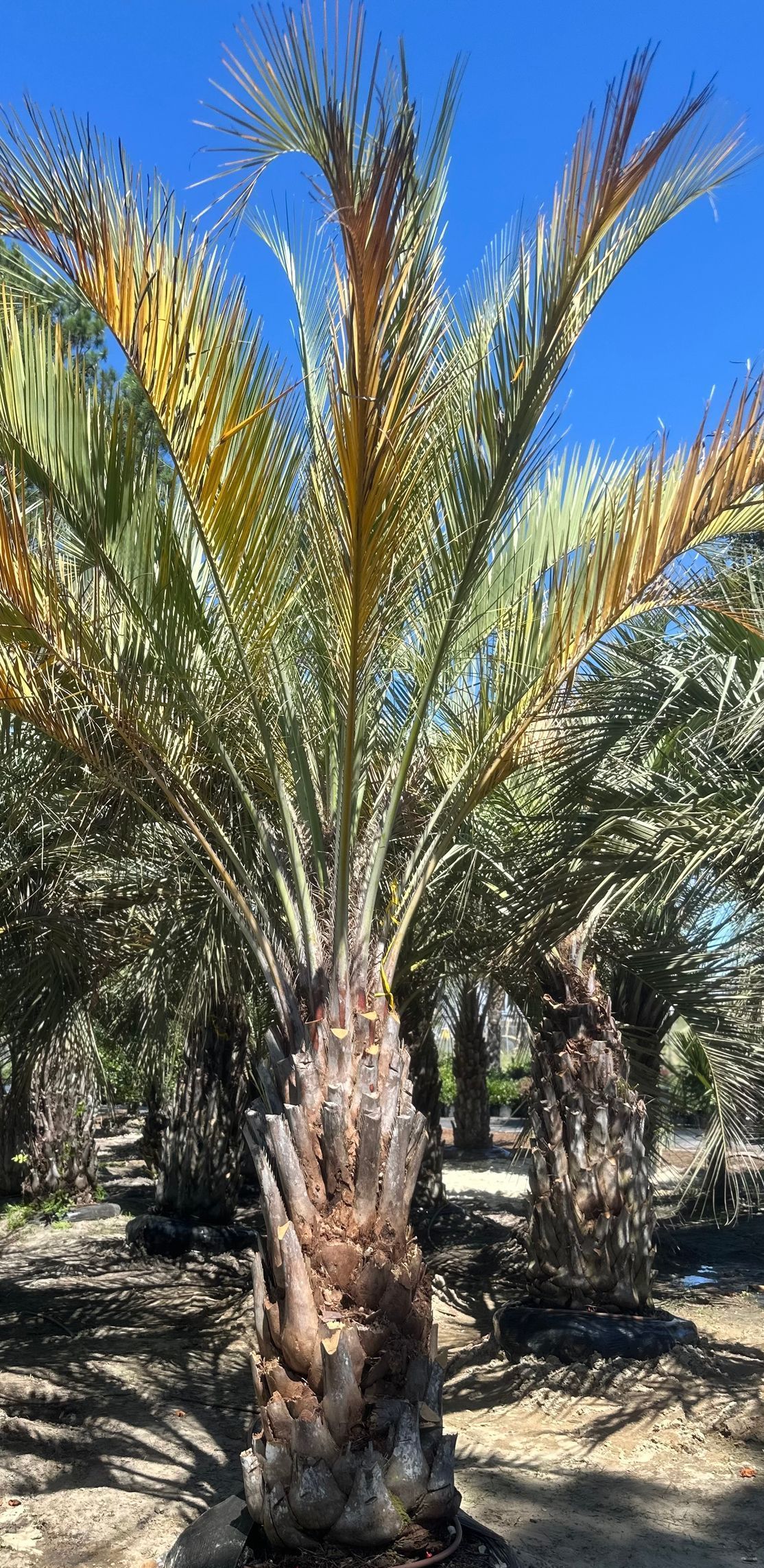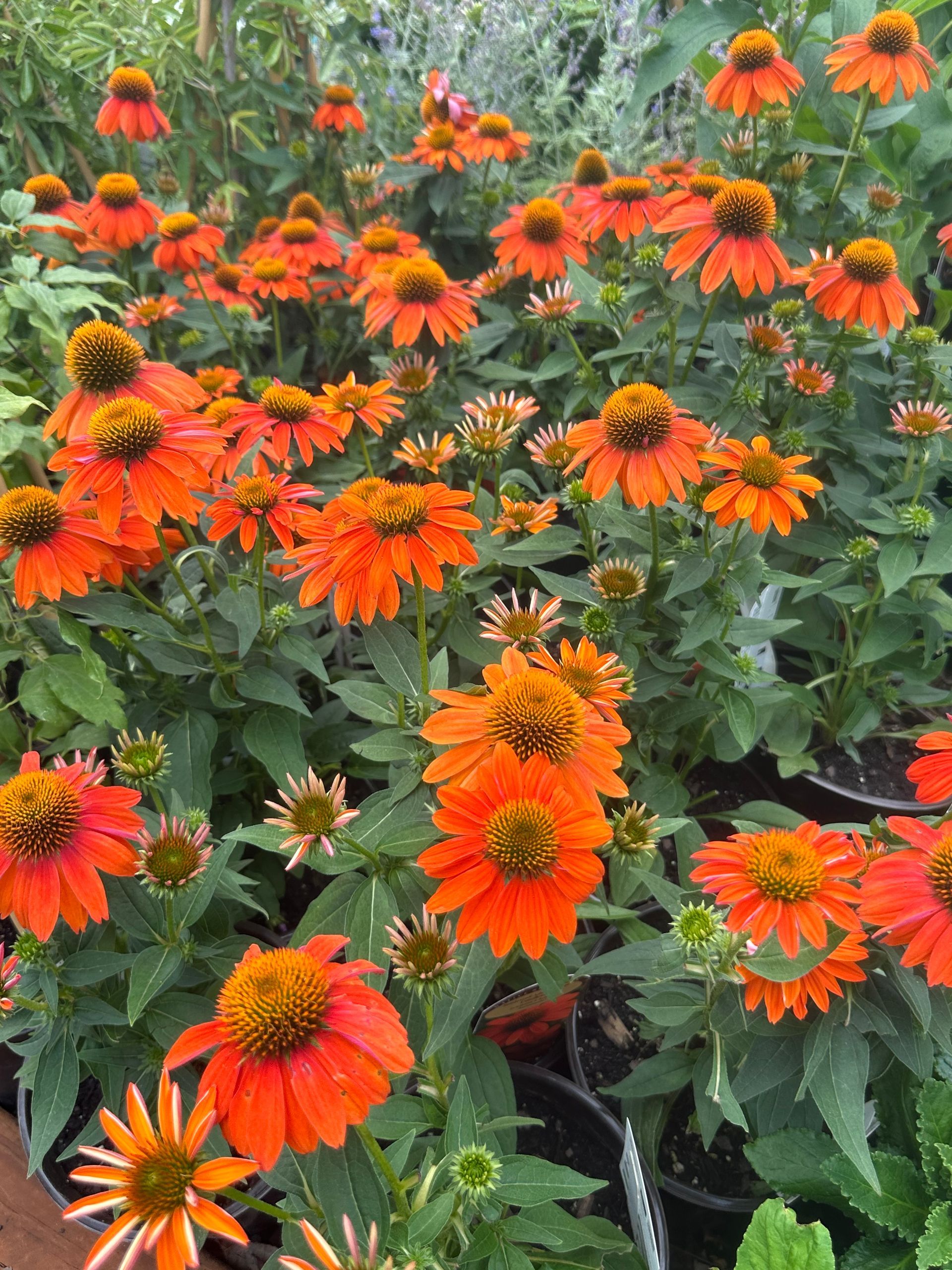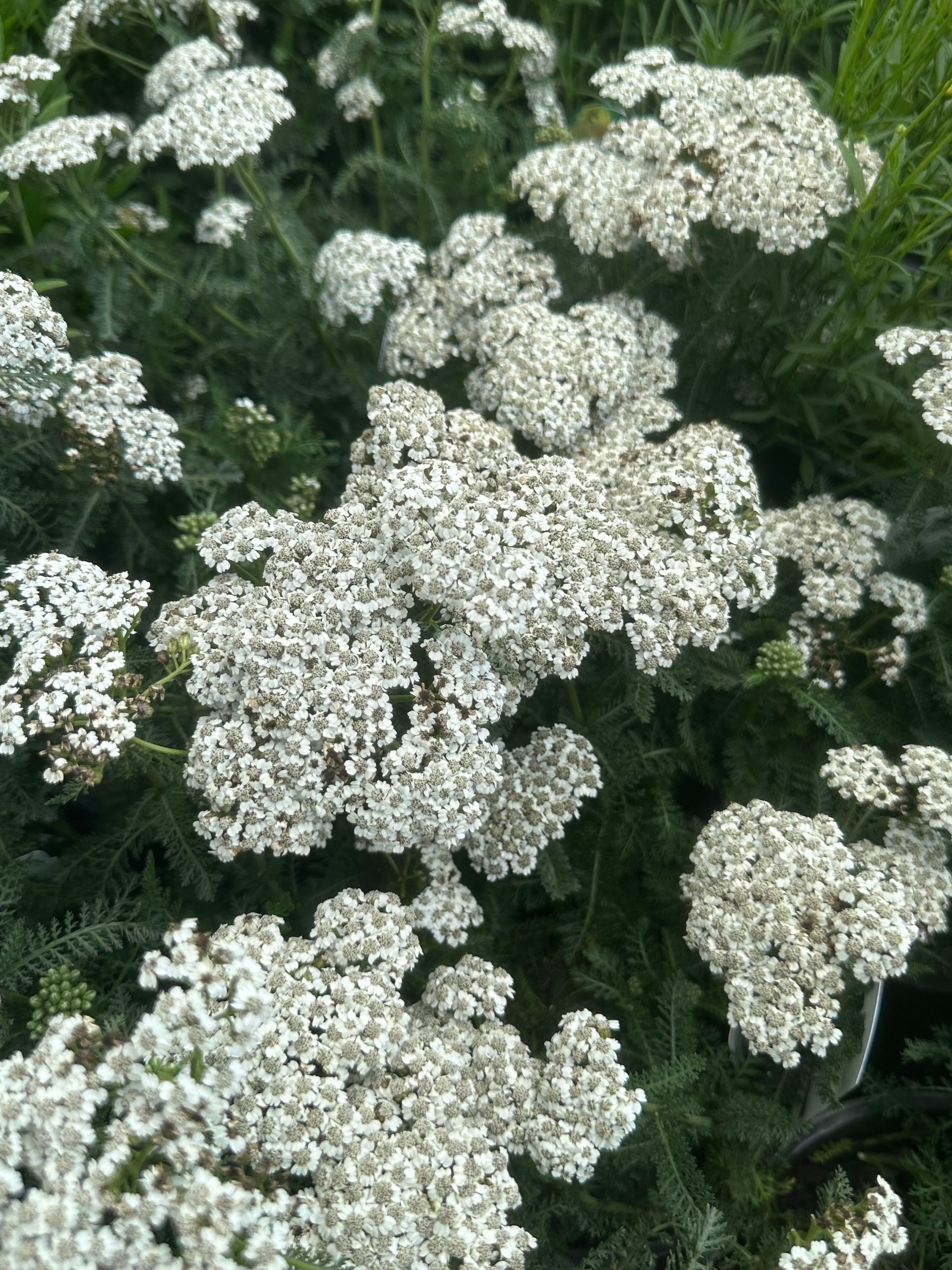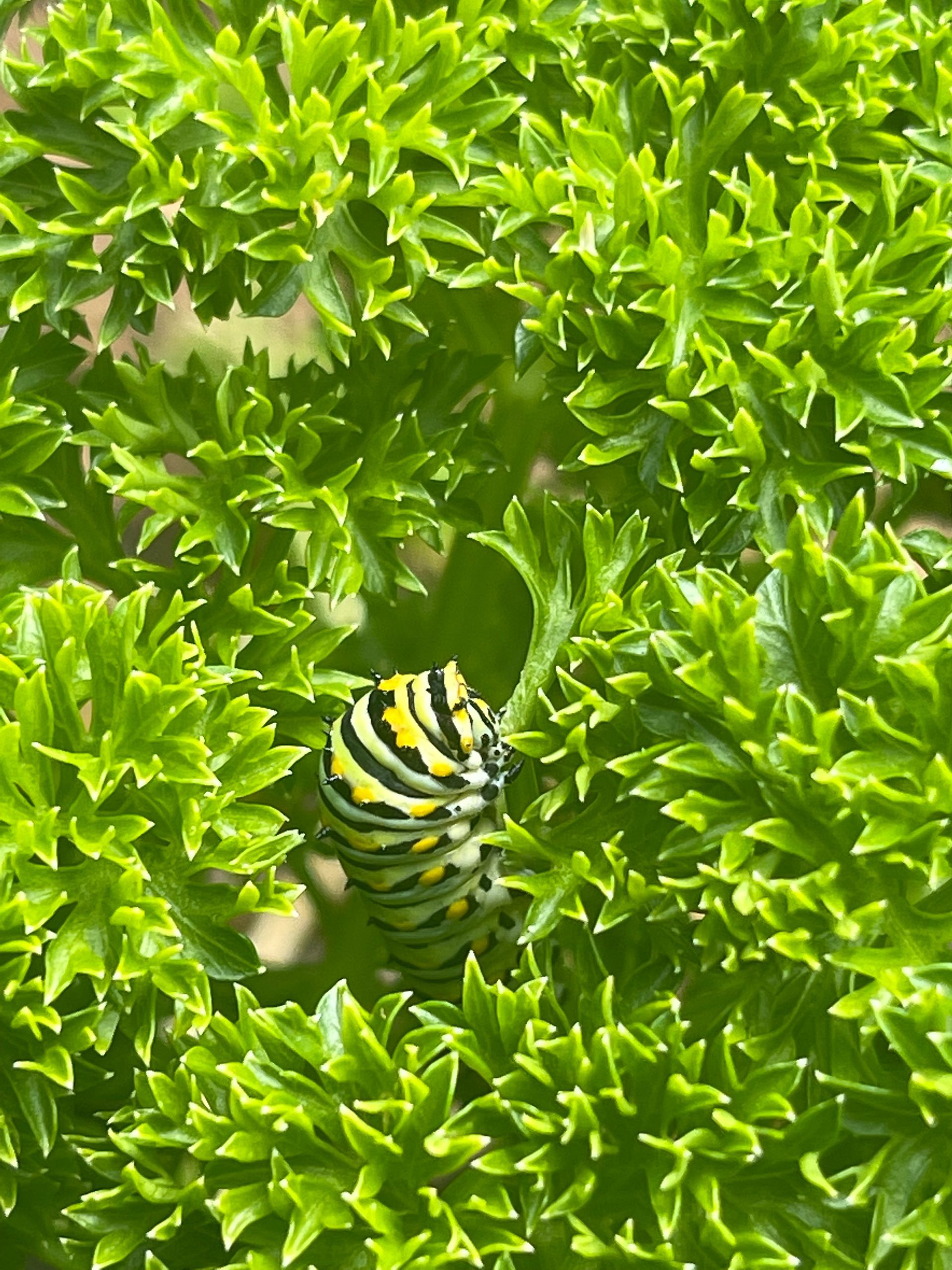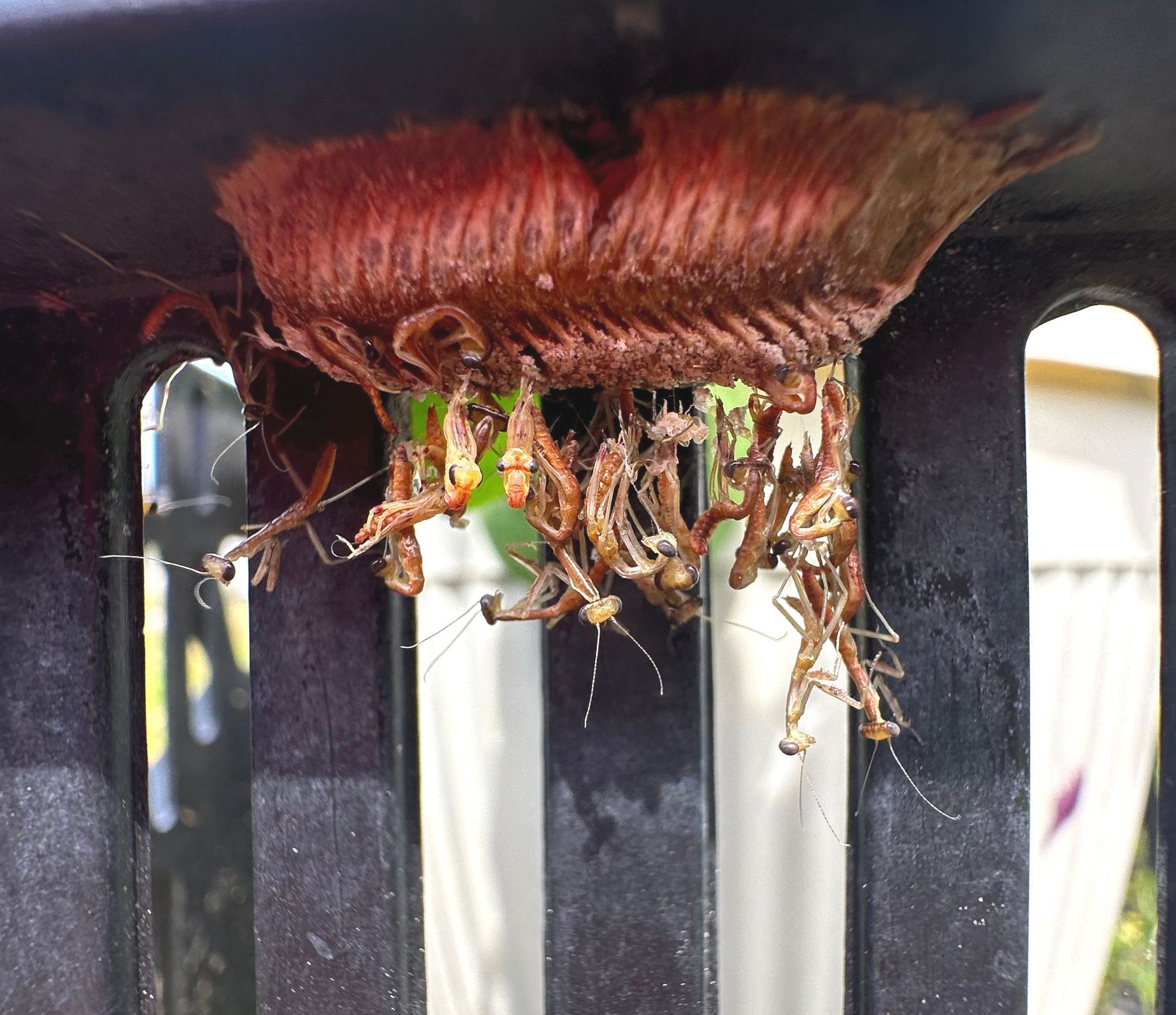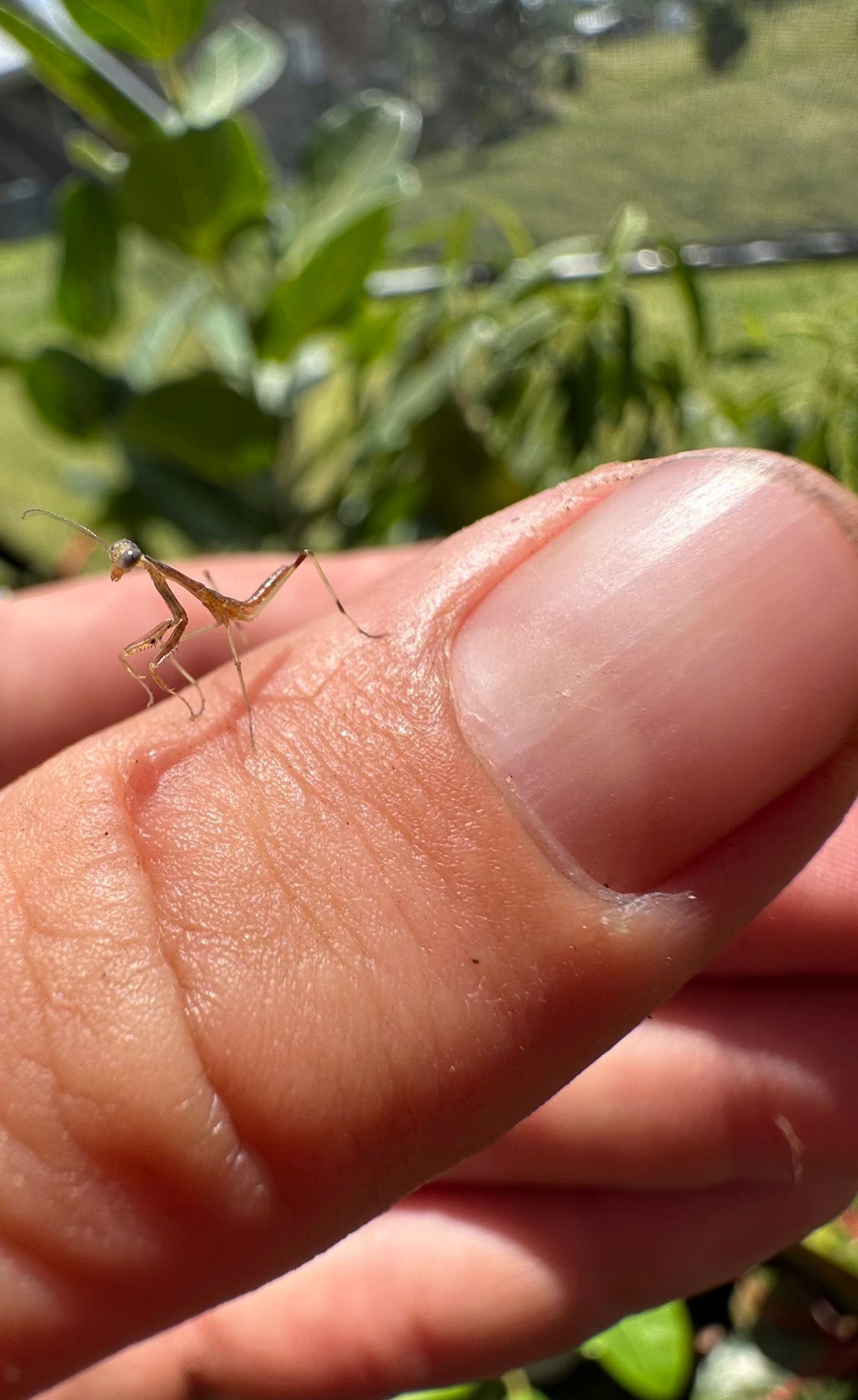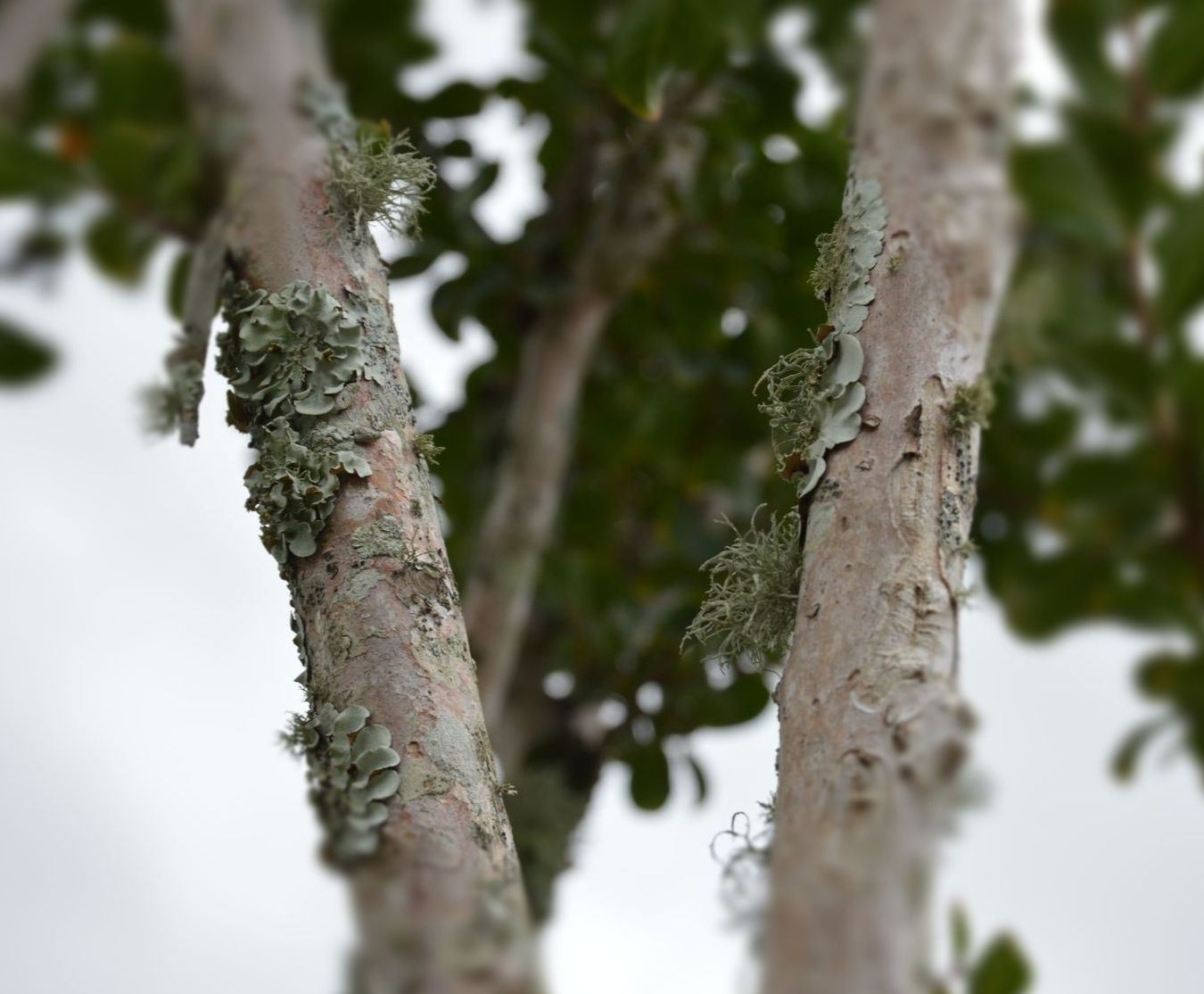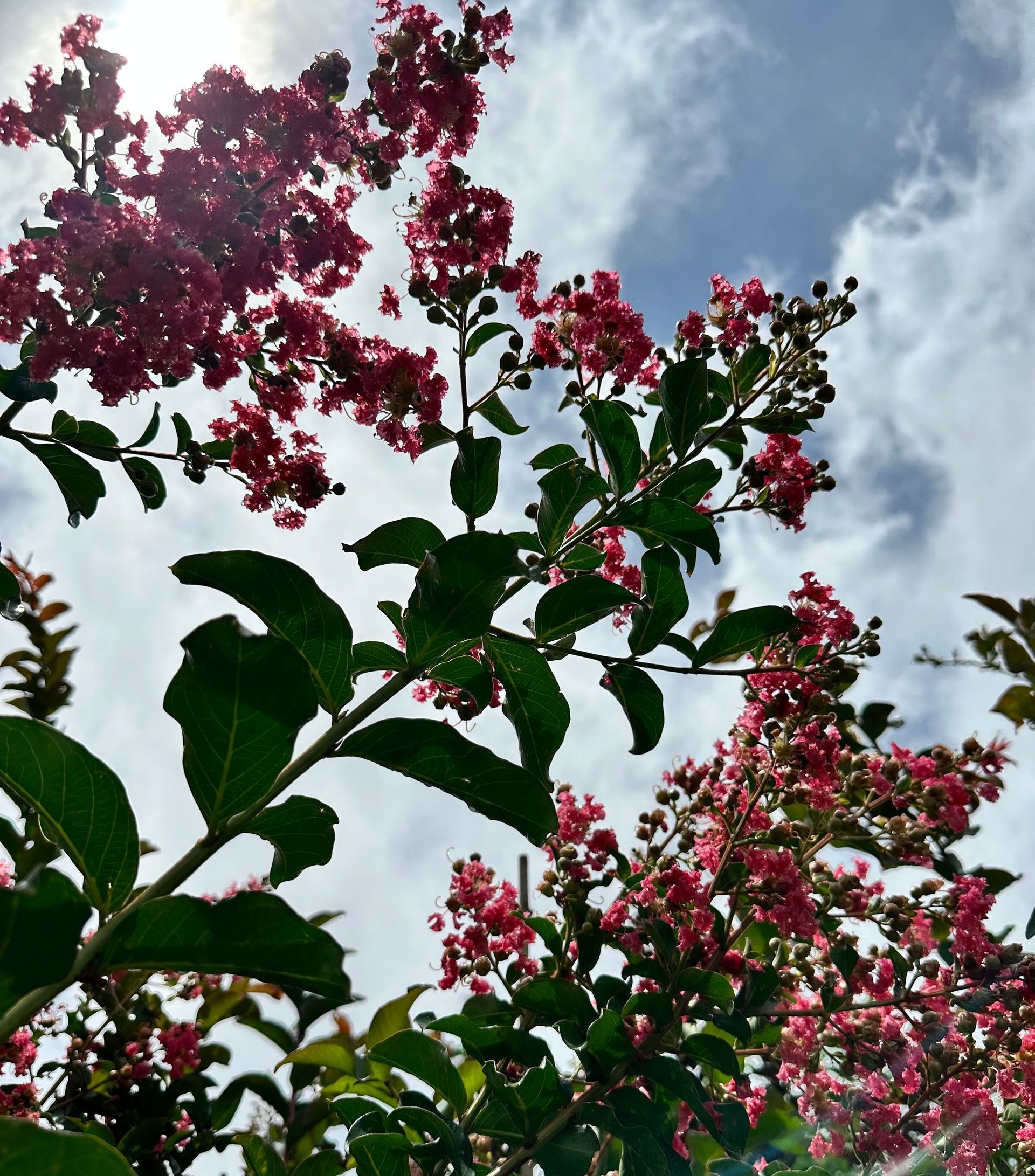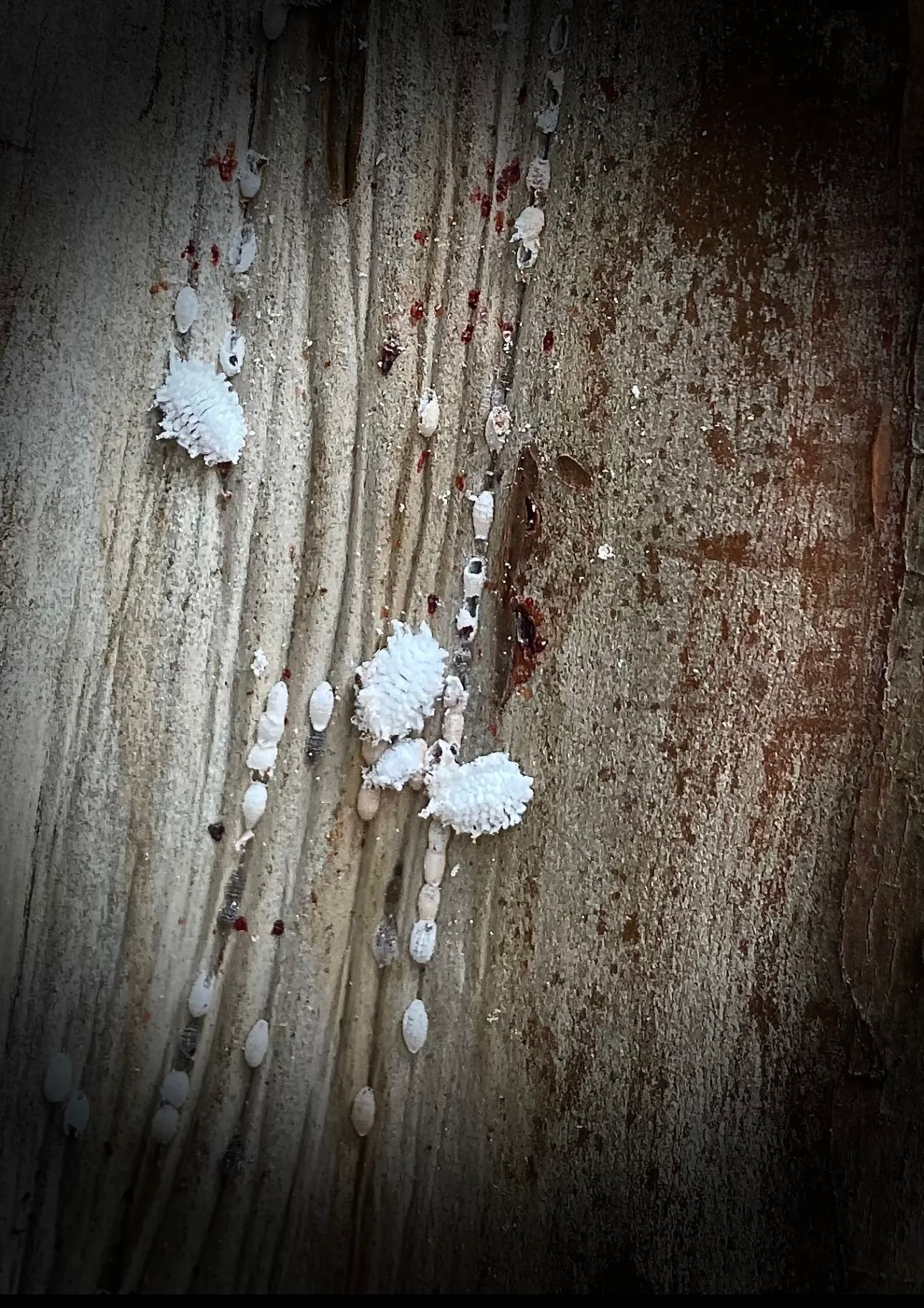Crape Myrtle Bark Scale
Introduction: With a surge in a Crape Myrtle Bark Scale infestation as well as confirmed sightings in our area, it is important we get in front of misinformation and work ethically to mitigate this newfound problem for Southern landscapes. While these are an invasive species, and they do cause damage to a beloved, Southern landscape plant, preventative pesticide applications are NOT the solution. We must face some hard facts. They are here to stay and there is no eradication that can feasibly nor ethically be accomplished right now. Invasive insects are not a new concept in the US; it is just another unfortunate result of human manipulation in the desired dominance over nature. Another unfortunate truth to past mitigation processes has been our massive use of pesticides broadcasted over large masses of our environment. The idea of eradication decimates our environment. Beneficial insects are the immune system of the environment and pesticides strip vitals away, killing all our native defenders. When the dust settles, these invasive insects have a red carpet into the heart of our ecosystem, spreading ferociously with no checks or balances.
Full pest eradications are very rare and very specific. There have been only a few “full” pest eradications across the US, such as the European Grape Vine Moth and the Boll Weevil. To bring the eradication efforts into perspective, the Boll Weevil is a pest eradicated here in NC that raged and rampaged cotton fields from here to Texas and still run rampant in South America. The damage to these stem-boring insects was devastating to harvest productions of cotton, one of our largest agricultural products. This threatened a multi-billion dollar industry, and hundreds of thousands of peoples lives economically. At this time, growers did not know the dangers of pesticides nor their destruction much further than the desired target. DDT, a now banned pesticide in the US due to its toxicity, was commonly broadcasted aerially on thousands of acres across the US. It was not uncommon for growers to fly these pesticides over several times a month during the growing season. While the notation for the insurmountable damage to our environment will be saved for another day, the important takeaway is that these pesticides not only didn’t stop the issue, they also killed so many beneficial insects that other infestations became widespread. Growers would broadcast these pesticides and find these weevils on flowers the next day.
After billions of dollars worth of bushels of cotton, and the extensive costs of pesticide applications were lost to no avail, treatment changed. After extensive research among entomologists, biologists, and growers, Integrated Pest Management programs were implemented nationwide. This included clearing fields of last seasons crops that may harbor the weevil into the next season, crop rotation, and uniform planting dates to lessen the blow of the weevil. Over time, these mitigation processes proved successful along with proper cultural care, vigorous scouting using pheromone traps, and proper, localized pesticide applications. The combination of early detection, extensive management practices and the very limited amount of host plants for the Boll Weevil makes it possible to mitigate. It is almost completely eradicated in the United States, however re-infestation does still give agricultural agencies cause for concern. While there are host plants other than cotton this weevil can feed on, only two are native to the US and they are only found in Texas and Arizona.
The European Grape Vine Moth was a localized infestation to California, found in 2006 and declared eradicated in 2019. If you couldn’t guess, grape growers and wine producers are heavily invested. The mitigation of this pest was state, federally, even internationally supported. Again, this was mainly funded by the actual growers, producers, and investors, both local and international. This mitigation effort was well synchronized against a very early detected, well-funded and supported issue. While pesticides were used, it was localized, with Integrated Pest Management a front runner for the most crucial aspect of success. Strenuous scouting, pheromone lures, and other cultural managements made these efforts successful.
Why does this differ from CMBS? CMBS does not pose any extreme threats to agriculture or home gardens past cosmetics. CMBS has not been noted to carry any diseases, and past its production of sooty mold in highly concentrated infestations, it does not pose a serious risk to landscapes. CMBS does have host plants past Crape Myrtles, even removing all Crape Myrtles from the landscapes will not eradicate this issue. This widespread pest stretches across agriculture, landscapes, and entire populations of our native ecosystem making it almost impossibly feasible for any kind of eradication. What does this mean for our landscapes? Well, it means we must learn how to deal with this pest and mitigate its issues in an environmentally conscious way. Crape myrtles are easy to care for plants and have little cultural issues, but they do already exist. Especially as with Crape Myrtle Aphids, a particularly difficult to treat pest insect that has the exact same impact as the CMBS does. Neither of these pests transfer diseases nor can fully kill an already healthy tree. This issue has become so widespread that it now just needs to be worked into integrated management protocols. There are ways to combat scale and there are things we can do to lessen the impact on our landscapes, but this must be done ethically. There is hope and this infestation is not going to be the end of Southern Landscapes. It is unfortunate, but now just part of life. One of the biggest reasons eradication is not ethically a viable option with how widespread across many different planes of the environment infection is. Not to mention the shear costs it would take to mitigate a pest like this, and the added damage treatment would cause to the environment. All of this isn’t to say that eradication may not be possible one day. Natural enemies or other biological controls may be found and established into Integrated Pest Management strategies with a possible resolve to this issue one day. What is most important right now is focusing on our native biological controls and establishing a healthy ecosystem in our home gardens. While it may be with good intentions, and we feel like we must protect the environment by stopping this insect. We also have to remember that we may actually harm the environment more than we are helping it, especially the widespread use of pesticides.
Why the vendetta? The only solution to mitigating a pest infestation like this, is backing our home team. You wouldn’t stop a cold by taking away someone’s immune system. If we put the same energy we have for stopping this pest with chemical warfare into caring for the environment, we will then, and only then, have any chance of a real solution. In the past, every garden center and extension agency has preached the use of pesticides as a preventative measure and the strong use of pesticides as a management strategy. This kills any chance our environment has to defend itself and lessens the number of beneficial insects, making it harder to establish a healthy population and bring the environment back to equilibrium. These widely broadcasted, non-selective pesticides are damaging, costly, and do not serve as a lasting solution for pest management. We are a coastal town, our waterways serve as coastal estuaries for a plethora of life much further than what we can see. Pesticide and fertilizer pollution can decimate entire chains of life in bodies of water and create dead zones in our coastal nurseries where hatchling fish can no longer survive.
Where did they come from, where will they go? Crape Myrtle Bark Scale (CMBS) was first noticed in Texas around 2004 . This Asia native has quickly spread across our Southern landscapes with the first noticed sighting in NC around 2019. As of right now, CMBS has been noted in at least 15 states across cold hardiness zones 6-10. These will continue to spread across the country and deeper into our ecosystem.
Host plants- Labeled Crape Myrtle Bark Scale, Crape Myrtles are unfortunately not the only plant CMBS actively feeds on, only preferred. Other host plants include Pomegranates, Persimmons, Boxwoods, American Beauty Berry, Cleyera, Ligustrum (privet), Raspberries, Hollies, St. Johns wart, spirea, edible figs and possibly more. It is possible to see scale insects on the surrounding plants of crape myrtles but most damage to these plants will occur from sooty mold.
Is there any hope? Yes! There is hope! While this pest will be persistent, nature will be able to regulate the pest to a manageable extent once the population of beneficial insects rises to the appropriate level. Because this pest is so prolific, it has created an unbalance, and our existing beneficial insects cannot keep up. Over time, our beneficials will populate, especially around areas of heavy infestation. The damage from this insect is purely cosmetic and with moderate mitigation practices to keep existing populations low, beneficial insects will be able to keep the population in check. This is why now, more than ever, it is important to consciously care for our environment. As mentioned before, possible biological controls such as bacteria may one day be found and provide a solution to CMBS. Our native beneficial insects will not be able to eradicate this issue on their own. In time they will do significant damage to populations and help reduce the intensity of infestations making it easier to mitigate in the landscape.
Identification: CMBS is a small, sap sucking insect often less than a tenth of an inch in size. Females of this insect develop a protective white, felt like growth around their bodies. While they look similar to mealy bugs, CMBS are not as large as mealy bugs in their largest adult stage. CMBS also have less white filaments protruding the body than mealy bugs do. When squished, mealy bugs tend to be a orange/yellow color while CMBS tends to be pink. Male CMBS are a grayish color with a pair of small wings.
Cultural Issues: With the only main threat being sooty mold and the general reduction in the vigor of plants, mitigation of these issues will be needed. CMBS will not only affect the noted host plants, but the sooty mold will spread to any plants under or around the drip line of the plant. As sooty mold coats the plants leaves it blocks out the sunlight and clogs the stomata of the plant, preventing the proper exchange of gasses and sunlight needed for energy production. This will slow down the overall rate of growth to the Crape Myrtle and surrounding plants. Sooty mold does not feed directly from the plant material it resides, it is a side effect to the honeydew or excrement of the scale insects. Plants sap contains mainly sugar, for the insect to get the necessary protein needed for growth and reproduction, the leftover sugar and sap are discarded, and coat the surrounding plant material. To clean sooty mold, spray the plant down with a diluted soapy water mixture and then spray the plant heavily with a strong jet of water to clean as much sooty mold off the plant as possible. This will only be a temporary treatment until the scale can properly be mitigated.
Mitigation: CMBS has moved so rapidly due to a few leading factors. First and foremost, transportation of infected plant material. Aside from populations slowly moving across one area, the transportation of infected nursery stock is the leading cause of this pests transportation from state to state. At the very framework of mitigating this issue, inspecting nursery stock of plant material is the first step in protecting your garden from infestation. CMBS is easy to identify in large populations, however small infestations hiding in branch crotches and under bark can be extremely difficult to spot. The other reason the pest has spread quickly Is simply due to the population of our native beneficial insects. It always takes time for the predators to catch up to the population of the prey items. We have to remember that small insects that breed rapidly do so as their populations are constantly under attack and serve as a food source for a large number of predators. They are on the bottom most level of the food chain, right above plant material. In their native range, CMBS and small insects serve as an important food source for a number of insects that then serve as a food source for other insects and animals. We have to remember that even pest insects serve a vital roll in the ecosystem and without them as a food source, the entire ecosystem would collapse. Although these are not a native pest to our area, our native populations will catch up. Doing your best to limit the number of scale will give time for predator populations to rise and reduce the damage caused.
IPM: As with any plant pest, Integrated Pest Management(IPM) is the leading method for pest prevention, and reduction. This is a framework based on 4 main concepts, followed in order of severity. IPM includes; Cultural, mechanical, biological, and lastly, chemical. This integrated approach to pest management will help gardeners to work with nature in defending their landscapes. Developing a system of proper plant care and pest mitigation will be the only way our environment has a chance to handle this new issue. This is going to take time, and helping our environment will be crucial. To learn more about developing an IPM for your landscape, continue to the next section.
Native predators: There are noted native predators to the CMBS. The Two Stabbed Lady Beetle, and other species of lady beetles, feed on CMBS as both adults and especially as nymphs. The Florida predatory stink bug has also been reported in the control of the CMBS. Lacewing larvae are another veracious hunter and can attack the less protected crawler stage of the CMBS lifecycle. All these beneficial insects exist in our environment already. I have personally seen all of these in my own home garden, mitigating other pest species. Now that there is a huge expansion of the food source for these beneficial insects, the environment will support a higher population of beneficial insects in time. The more you can do to promote these good species, the quicker we can establish proper management strategies. There may be other predatory species feeding on scale including parasitic species of wasps and other generalists.
Lichen- We receive many concerns every year regarding the gray growth that occurs on the bark of Crape Myrtles. This is generally of no concern and is only feeding on the already dead bark layer of the tree. Lichen is actually a symbiotic relationship between fungus and algae. The algae cannot live on its own and needs to be protected in periods of drought. This is where the fungi steps in and protects the algae, fungi is a natural decomposer and while it does get nutrients from the decaying plant matter, the algae shares the sugars made through photosynthesis. Again, this does not hurt crape myrtles. However, if the amount of lichen is extremely high, it may indicate other health issues with the plant. Many lichen species are medicinal and can be used to stop bleeding if you find yourself in a position away from immediate help. Lichen is often an indicator species for air quality, as areas of high air pollution cannot support the growth of lichen.
Integrated Pest Management
Cultural- Plants in the wrong environment or receiving other physical stresses will be weakened and more susceptible to pests. This includes either too much or not enough water, sun, air movement, or incorrect PH or nutrients. The first step in pest management is looking at general plant health. Fixing these issues can be enough to help the plant fight off the insects itself. In terms of nutrients, do not push too high in nitrogen or too quick a rate of growth. This will push too many soft leaves that will not harden off fast enough. For insects like aphids, an overabundance of nitrogen is the leading cause of high populations. A healthy plant is extremely resistant to pests and disease. Improper pruning is often an issue with crape myrtles as heavy pruning referred to as Crape “Murder” creates weaker and more succulent stems that are easier for pest infestations to grab hold. Proper pruning and overall plant care are important factors when mitigating CMBS.
Mechanical- This is simply physically removing the insects. For things like aphids and mealy bugs, just blasting them off the plant with a stronger jet of water will lower the population to a point where beneficial insects can take care of the rest. For hard bodied insects such as beetles, dropping them into a bucket of soapy water will not stop the damage from accruing but will limit the amount. If the level of damage is too high, it is time to call in your next line of defense.
For Crape Myrtle Bark Scale this includes blasting the insects off with a strong jet of water, scrubbing the bark and stems of the tree with a soft brush and a solution of dawn dish detergent. Doing this multiple times through the growing season will keep populations low without much damage to our native beneficial populations.
Biological - This is one of your best lines of defense. If you have a population of pest insects for predators to feed on you can naturalize beneficial insects into the ecosystem. This gives a balance of predator and prey, and will keep numbers down to unnoticeable amounts if all cultural aspects of the plant are met. For this portion of an effective IPM, unselective broadcasted pesticides will ruin this line of defense. Biological control is not just beneficial insects, but fungi and bacteria too! A soil inoculant such as Milky Spore will attack Japanese Beetles in their larval grub stage. This particular inoculant contains a bacterium called Paenibacillus popilliae that will kill the grubs and prevent the population from appearing. An effective defense with bacteria can be a long-term process as it takes 3 years of application to make a lasting defense. The benefit, however, is a lasting defense for over a decade after. Other biological control are insects such as lacewings, and predatory mites. You can often buy these online or from some stores and they offer the ability to introduce these species into your environment. Make sure that the insects you are getting are bred and not harvested from the wild.
CMBS does have native predators that already existing in our area. The twice stabbed lady beetle, and the Florida Predatory Assassin Bug- These insects are generalists and will feed on a number of other species in the garden, especially at different sizes and life stages. This is important for all aspects of nature and it may not be uncommon to see some beneficial insects such as the Florida Predatory Assassin Bug feeding on insect larvae such as caterpillars. Remember that checks and balances are important for all insect species including bees and butterflies.
Chemical- This is the absolute last step when all else fails. Always remember, pesticides toxic enough to kill hard bodied insects such as beetles will also kill bees, butterflies, and much more it encounters. There are a number of effective chemical sprays and application instructions should be followed closely. There are non-chemical sprays that are plant and mineral derivatives, such as neem oil and Horticultural oil, which are both effective sprays that work via suffocation. When switching to chemical pest management, these can be a safer alternative for small, soft bodied insects such as aphids. If stronger pesticides are needed, there are some products that are still safe to use in the landscape, when done correctly. When applying any chemical product, remember to wear Personal Protective Equipment (PPE). This can vary depending on the specific pesticide and can be found on the label.
This integrated method of pest management needs to be implemented across the entire landscape and not only for the Crape myrtles.
Threshold- Establishing a threshold will help you determine when to take the next step in your IPM system. A threshold is simply the point at which infection, or populations of insects, are at a high enough point to act. Pest are inevitable, and actually needed in the landscape. It is only once populations reach a high enough point that the scales are tipped, and the plant will not be able to grow past the infection. If a small number of pests is noticed, start by checking the soil moisture, PH, and other cultural aspects of the plant’s health. Clean off any noticeable pests and prune off any diseased branches. While adjustments are being made, keep an eye on the population of insects or diseases. With populations lowered, the beneficial insects will move in, leveling the playing field and keeping the scales balanced. If the infection or infestation continues to rise to a point where the plant is starting to decline, then chemical methods may be deemed necessary. Mechanical methods should be attempted multiple times before moving to this step. The beneficial insects should have time to repopulate the area and better control the infestation. Once the need for chemical treatment is needed, spray the plant off with a heavy jet of water early in the morning to clean the majority of pests. Later that evening, when the sun is off the plant and bees are no longer foraging, spray the plant with pesticide. This should always be done at the specified application rate and cover the entire plant.
Proper pesticide applications when deemed necessary: Remember the threat of pesticide applications on such a heavy flowering plant such as crape myrtles, and the number of bees and butterflies that frequent these plants.
First and foremost, horticultural oil and dormant oil. Horticultural oil that is mineral oil based can be useful in limiting populations during the growing season, and before beneficial insects have a chance to move in. Dormant oil is among the best options for this management style. Multiple applications of the higher concentrated dormant oil can be sprayed on the entire defoliated plant multiple times through the winter, without ill effects. Before applying either of these oils, scrub the plant down with a soft bristled brush and a mixture of dawn dish detergent and water. This will remove a large portion of the population and make applications of pesticide more effective. When applying horticultural oil during the growing season, follow the same process of scrubbing the stem and branches, but also ensure you are spraying the plant at a time of the day when no direct sunlight is on the foliage to prevent further stress.
Other contact-based sprays do not offer much more management then oils and scrubbing do. Very rarely do these insecticides eradicate pests, however they can be highly destructive to many beneficial insects it comes into contact with. Lowering the population of your natural defense is moving the opposite way in proper integrated pest management.
Chemical, systemic insecticides are another mitigation process common in treatment for CMBS. This is the treatment method that has to be used with EXTREME caution. While there are a number of products on the market, imidacloprid is among the most common. These insecticides work by being absorbed by the plant and translocated throughout the phloem where the pest insects feed. This also means that this insecticide becomes present in flowers and high accumulation of this toxin in bee and butterfly populations can be extremely damaging. When choosing this method, the plant still needs to be in the active growing period but past its bloom season. Regardless of the specific insecticide used, all of these insecticides should be used with discretion and all environmental protocols should be followed carefully on the label. These can be more harmful to the human body as well, so always follow specific personal protective equipment precautions. Because of the wide use of this systemic pesticide and its lasting effect in the tree, resistance is a concern in these overly used products. Because the amount of the toxin becomes less concentrated over time, the possibility of insects being born that are resistant to the pesticide is higher and has been noted in other species. It Is best to consult a professional before going this route and all other cultural, mechanical, and organic mitigation process should be completed, multiple times, before moving to this step. Systemic insecticides will not give a lasting protection against CMBS and once the insecticide is diluted throughout the plant, re-infestation is a threat. This again leads to the importance of supporting our existing population of beneficial insects to offer a lasting balance to this new and widespread issue. These sprays can be particularly damaging to aquatic life and extreme caution should be given around drains and bodies of water. Do not spray any pesticide where bees are actively foraging, even spraying a few can result in entire hives being lost if fed to the queen.
Other mitigation measures
• One option is to simply not plant crape myrtles. While we realize the importance and value of these landscape plants, we also realize this really isn’t practical with the amount of myrtles already existent across the south. Because these pests can attack so many other plants, solely avoiding these plants in the landscape does not offer total control over this issue.
• Diversify plantings. Even when deciding on adding crape myrtles to the landscape, more plant species mixed into the landscape will help deter, slow down, and reduce the overall stress from CMBS.
• Cut and burn heavily infected trees if localized. For many secluded neighborhoods, single infestations can be eradicated to reduce the risk of spread. Even if only the infected plants are removed, this does not guarantee they have not already spread or that re infestation will not occur.
• Scout constantly- the only way to prevent this pest from doing major cosmetic damage to landscapes is catching it early. At least weekly, inspect the stems of your crape myrtles and note populations as soon as they occur.
• Check trees thoroughly before purchasing and installing new trees. Check the branches crotches as well as under bark thoroughly. These pests are extremely hard to detect in low numbers and this does not guarantee they are pest free but effort needs to be given.
• Bug houses are a wonderful way for home gardeners to encourage beneficial insects and over winter a lasting population of natural defenders. These can be placed all around the garden and made from fallen logs and stems, bamboo bundles, and made houses with a multitude of sized holes to accommodate a wider range of insects.
• Leave unaffected leaves Many beneficial insects overwinter in dead flower stems, leaves, pinecones, and many other plant structures often removed from the landscape. Leaving as much of this material as possible will allow a larger population of beneficial insects to defend our gardens.
• Less pruning of crape myrtles is important. The harsh pruning of Crape Myrtles is one of the leading causes of this plant’s existing cultural issues. Pruned Crape Myrtles are much weaker and much more susceptible to pest infestations.
• Watch other insect species such as wasps and ants. Wasps will feed on both scale and the honeydew they secret while ants mainly go after the honeydew. High populations of these insects around a tree often means a prolific feeding source and can be a sign scale or aphids are present.
These are neighborhood wide management practices that have to be developed in order for this to work. Sole gardens will have no chance at mitigation, especially in large subdivisions void of natural habitats. These large areas of heavily and often over managed landscapes make it very difficult for any beneficial insects to live. If your HOA does not support the proper Integrated Pest Management Practices, then make sure you are voicing your concerns when possible until changes are made. Talk to your landscape maintenance company and make sure there is transparency in the care being given to your landscape.
